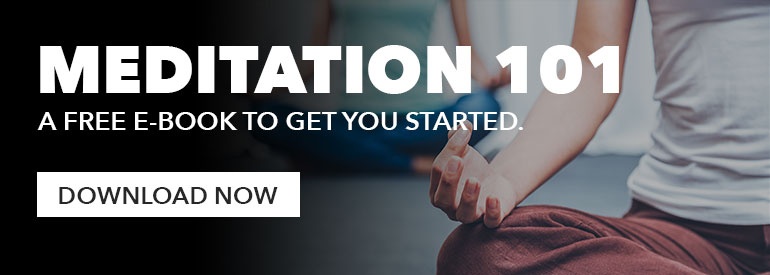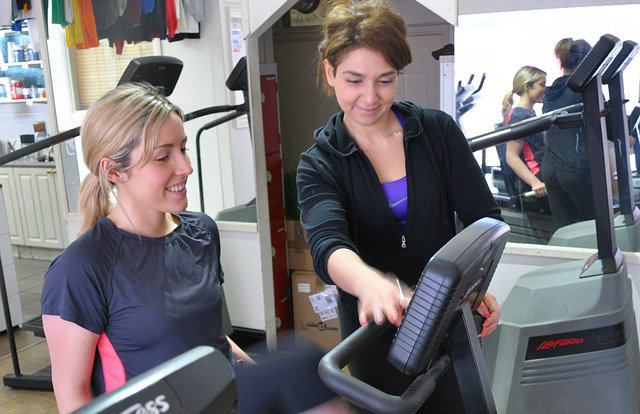 Reading Time: 6 minutes
Reading Time: 6 minutesEvery year around this time, many of us are facing down the flu. There’s nothing worse than that achy, tired, don’t-want-to-do-anything feeling that comes with the flu.
Actually, there is one thing worse — getting those achy, tired, don’t-want-to-do-anything feelings just as you have established some really amazing and healthy habits in your life.
So, here you are: you’ve taken on the Whole Life Challenge and life throws the flu at you. That’s okay. It doesn’t have to derail your Challenge — and more importantly it doesn’t have to derail your commitment to fitness.
Here are six ways you can work on your health and wellness, even when you can’t work out.
1. Admit You’ve Got the Flu (and Don’t Whine)
The first thing you need to do is recognize you are sick and be okay with that. Whining is allowed but should not become normal. Really, it only makes the misery worse to constantly hear about how awful the flu is. And when the voice whining about the flu is in your own head, there’s no escape. So now is a perfect time to work on your mind game and controlling that persistent little voice that has an enduring case of the “negativitis.”
2. Do a 5-minute Body Scan
Yes, you feel achy but where exactly do you feel it? Can you pinpoint it? Does it move around? Does the depth and pace of your breathing affect it?
Even if this doesn’t make you feel any better (which it might), it’s a good exercise for developing body awareness that will serve you in the future. A lot of times we aren’t aware of what we are feeling in our bodies. The downtime that comes with the flu is a perfect time to learn about how your body experiences discomfort — and how your thoughts and feelings react to that discomfort.
You might find you don’t hurt as badly as you thought or, more precisely, that even if you hurt you don’t have to suffer. Suffering is a choice and a body scan can help you take control of that choice.
3. Keep Up Your Healthy Habits with Visualization
Another way to work on the mind game is to do some visualization. There have been countless studies to show the power of visualization. In one of the most well-known, Dr. Judd Biasiotto at the University of Chicago tested three groups of basketball players. The first group practiced free throws every day. The second group visualized themselves making free throws every day. The third group did neither. After thirty days, the three groups were tested. The first group improved by 24%. The second group by 23%. The third group did not improve at all.
Did you catch that? Without even touching a basketball, group two improved almost as much as the group that practiced every day.
You might not want to visualize practicing your foul shot when you are achy and nauseous, but there are so many other things to visualize that can help you reach a variety of goals:
- That race that’s coming up.
- That movement you’ve been trying to master.
- That meeting at work.
- A date with your spouse.
- A tough conversation with your child.
- Or maybe you visualize your immune system rallying all its forces to fight the flu that’s bringing you down.
Just remember, there’s a difference between visualizing and just thinking about something. Thinking about a thing can lead to worry and stress, which is the last thing you want when you are sick. Visualizing can lead to a feeling of confidence and relaxation which will set you up for healing.
The difference is in the details and the outcome. Focus on the nuances of the movement, winning the race, the facts that support your meeting presentation and the confidence you feel while speaking. Picture everything going “right,” and if obstacles come up, visualize yourself solving your way through them. The key is to really feel the moment and the actions you’re visualizing. Feel the emotion of the moment and let your whole body experience it.
4. Use the Opportunity to Educate Yourself
Another way to strengthen the mind is to catch up on some podcasts and audio-books. It might be tempting to binge watch Netflix, but will that serve you when you feel better and want to dive back into your training?
Instead, strap on your headphones and listen to a couple of episodes of the Whole Life Podcast. Or dig into the audio version of that book you’ve been meaning to read. You might doze off in the middle, but who cares? If the audio continues to play while you are snoozing, you still are getting the benefit of your subconscious hearing the information and inspiration you are after.
One could very well make the argument that you might get more out of the experience by letting the thinky-part of the brain drift while you continue to absorb the vibrations coming through your ear canal with the more primitive part of your melon. Too often that thinky-part just interferes and talks us out of believing and acting on the stuff we know is right. The benefits of audio during this less analytical time of our day can be pretty awesome.
5. Use the Flu as a Sugar Detox
Lose your appetite with the flu? That’s okay. Focus on kicking that sugar habit once and for all. If nothing tastes good and you have to force yourself to eat, might as well make that food something that’s good for you like bone broth or a hearty soup. You’re not only nourishing your body, but you’re making sure you are getting the fluids and electrolytes you need to heal and come back strong.
6. Notice the Joy of Movement
And speaking of which — make sure you ease back into your workouts. Take it slow. Start with gentle movements and lots of mobility before diving into anything intense. If you are working with a coach or trainer, make sure you tell her what’s going on and that she scales back any workouts for you for the first week, if not longer. If she refuses to do so? It’s time to look for a new trainer.
And be honest with yourself. You just recovered from a moderately severe illness. Don’t expect to get any personal bests. In fact, don’t expect to perform nearly as well as you did pre-flu. In fact, go into your first couple of workouts with no expectations at all. Just showing up is a victory. Push the ego aside and relish in the joy of simply moving again.
Use Your Downtime as an Opportunity
Rest assured: just because you were down and out for a bit doesn’t mean you’ve lost everything you worked so hard for. And, by taking care of yourself and easing back into things, you are helping to make sure you fully recover and don’t get hit with round two because your immune system is still compromised.
The flu is no fun, but taking advantage of what it gives you in time to reflect and the chance to take a little better care of yourself can actually put you in a better place on the other side.











